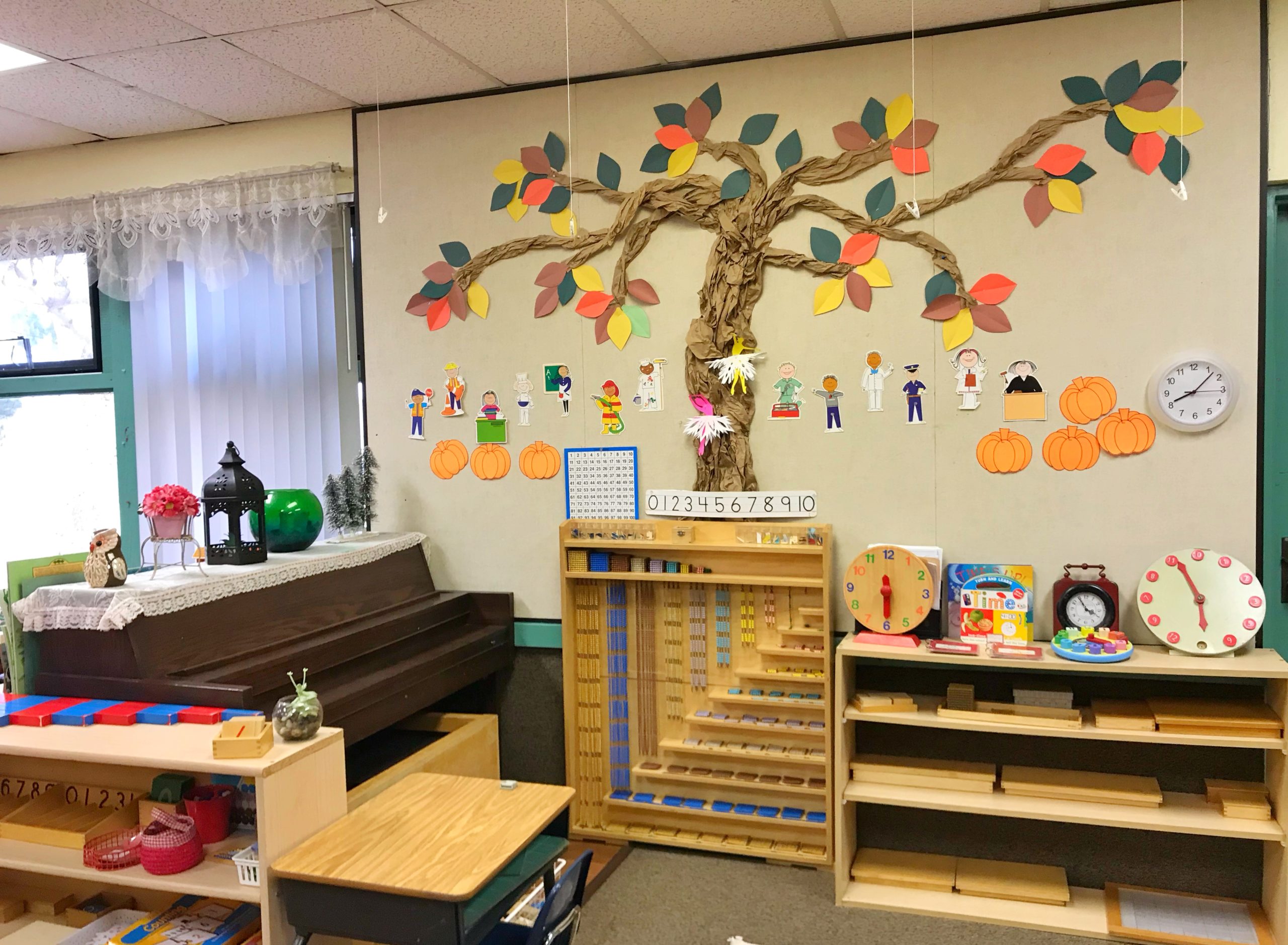
Typically, parents tend to exclude children from mealtime activities. Yet, this approach may inadvertently miss a crucial opportunity for fostering children’s development in areas such as coordination, manners, and utensil usage.
Explore the advantages of incorporating the Montessori method to involve your child in using utensils and setting the table in this article. Keep in mind that at Central Montessori Schools (CMS), we provide specialized activities designed to promote creative problem-solving and independence.
Eating and Learning
As we have seen in previous blogs, the Montessori method aids in developing children’s capabilities while preparing them for everyday life situations. While this teaching is mostly associated with academic learning, it can also be applied in daily activities, including mealtime.
In this case, you should allow your child to explore and become familiar with real utensils, plates, and glasses—specifically, glassware and knives. Adults tend to keep children away from these items due to safety concerns. Even during the early years, parents replace metallic or glass objects with plastic utensils and cups. However, children often struggle with these utensils, usually resorting to using their hands or asking for assistance, delaying part of their development.
Therefore, Montessori method specialists recommend using metal cutlery and knives to encourage children’s autonomy. However, as in every process, this activity must be supervised by an adult, and the child should have utensils suitable for their capabilities and hand size. For example, during the introduction of solid foods around six months, children begin using a spoon for their purees and other foods for the first time. Clearly, the size of these utensils is larger than their hands because parents are the ones feeding them. As months pass, Montessori specialists and nutritionists recommend updating the utensils to improve eating skills and development.
Moreover, several Montessori Method specialists suggest that using spoons and forks correctly helps children improve or start developing writing skills. This is because the child needs to control their hand, which will lead to better pencil movements. Additionally, some educators begin implementing knife use from 18 months onwards for spreading, which also aids in improving hand movements for drawing strokes.
However, in many instances, children continue eating with their initial utensils without evolving. In such cases, you can search for different utensils that suit their age and hand size. There are even smaller-sized metal knives, forks, and spoons designed for children, which are very useful for them to learn to eat independently by imitating adults. Similarly, there are glass cups that are used until the child is around eight years old. On this matter, Maria Montessori, the creator of the Montessori approach, pointed out that if adults do not give children a glass cup, it is because they ‘value the cup more than the child’s learning process.’
Therefore, when setting the table, it is important for the child to have their designated space, their own utensils, and a glass cup to eat like adults. If the child accidentally breaks the glass, you should explain that it was made of a more delicate material than what they normally use, hence more care is needed to avoid breakage. Having said that, proceed to gather the broken pieces, just as you would if it were broken by you.
Moreover, invite your children to help set the table, including their new items. They can even place individual tablecloths for each family member, with names or relationships written, so the child can assign places during mealtime. This will make mealtime a fun yet responsible hour.
Other Benefits of Setting the Table and Using Functional Utensils

Beyond developing or improving writing and drawing skills or fostering a child’s independence, using functional cutlery and knives has further advantages, such as:
Improving coordination
Linked to writing, using utensils and glasses helps improve hand-eye coordination, enabling children to guide their hand movements for proper visual capture. This skill is also present when assembling toys, painting, and fitting objects together.
Aiding gross motor skills
As mentioned earlier, allowing your child to help set the table by placing plates, utensils, and glasses from one point to another will improve their motor skills and coordination, as they have to move from one point to another without dropping items.
Overcoming frustrations
If it is the first time your child will use utensils independently, it is normal for them to feel frustration initially when trying to use the fork or spoon. Therefore, it is important to accompany the child in this new activity, demonstrating the proper way to hold the spoon or fork with your own food. Around a year and a half, children start grasping utensils in a fist-like manner. Later on, their grip will improve, and their hand movements will become smoother.
Finally, remember that the Montessori method allows for errors as part of the learning process. Hence, if during the table-setting process, the child accidentally breaks a plate or uses a fork for something that should be eaten with a spoon, do not scold them. Instead, explain what happened and let them learn from the mistake to avoid repeating it in the future. If you want to learn more about the “Benefits of Eating with Montessori-Style Utensils,” or any other topics covered in our blog articles, feel free to call us or visit our CMS campus in Encinitas. We will be happy to assist and guide you through the process.




